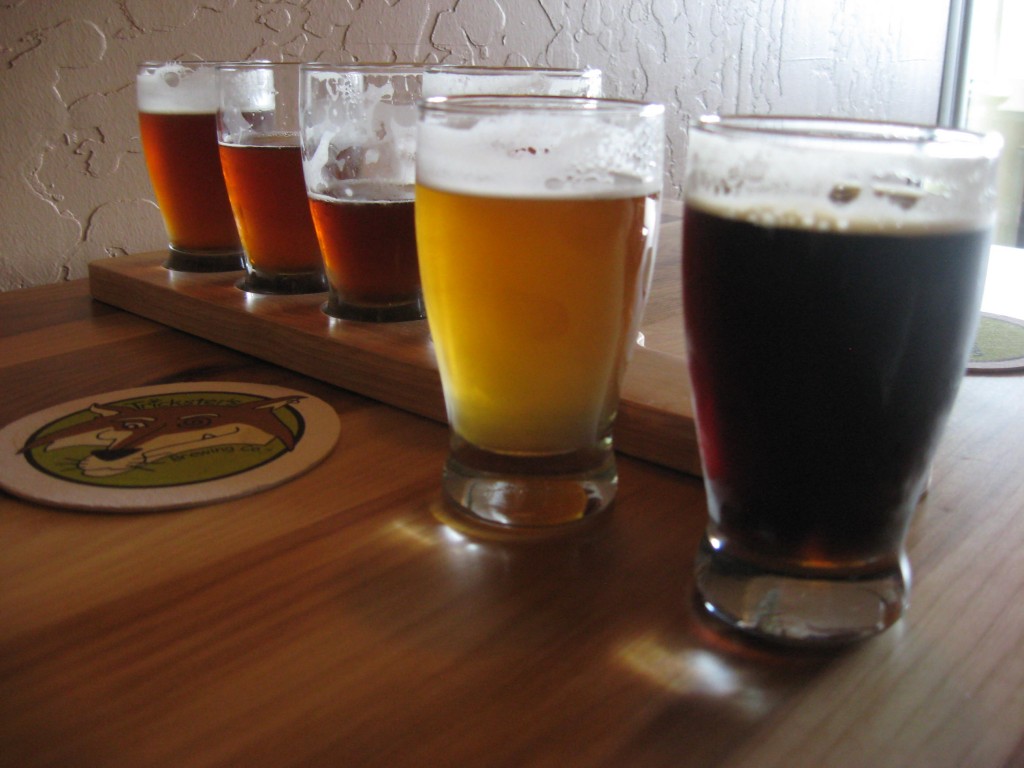
Profiled by Maria Devan for PGA
 Pours the color of sunshine. Yellow gold. If it weren’t for the particles in suspension to offer haze, you would need sunglasses to look at this bright beer. Fat white head of foam that fell slowly and left great lace.
Pours the color of sunshine. Yellow gold. If it weren’t for the particles in suspension to offer haze, you would need sunglasses to look at this bright beer. Fat white head of foam that fell slowly and left great lace.
Nose is decadent with hops. Fruity hops run the gamut from citrus and citric tartness to mango and stone fruit softness and depth, to a graceful pineapple that screams hops,with a touch of twang. There’s the brightness of citrus zest and this yeast is the funkiest of the entire box of Belgians. Dry earthy yeast. mango, pineapple with it’s bit of acidic tang, and mango with it deep stone fruit soft sweetness. A floral like flower petals.
Now let’s have some…
Taste is IPA all the way. Light body. No slickness no heaviness. The malt is crisp dry wheat that offers a bit of sour and a refreshing middle. It almost puckers but not quite. Delightful! The fruit is stellar. With so many fruits to create the idea of complexity, until you drink it and realize that without the characteristic IPA bitter this was fruit punch. Light wheat cracker malt brings you a crisp dry floral with a bushel of fruits that do not realize their intense sweetness because on their heels is an IPA bitter. It swoops in like a predator and takes the finish but you are satisfied.
Craker-y, crisp wheat with a touch of natural sweetness, dry and crisp from carbonation. Beautiful. Congratulations Ithaca. The bit of funk did this beer good and I enjoyed it immensely. It’s as though the sun came out today and I put it in my glass.
Welcome to the PGA beer rating system: one beer “Don’t bother.” Two: Eh, if someone gives it to you, drink. Three: very good, go ahead and seek it out, but be aware there is at least one problem. Four: seek it out. Five: pretty much “perfecto.”

_____________________________________________Beer HERE
 Maria Devan lives in Ithaca, NY and is frequent reviewer of beer and a beer lover deluxe.
Maria Devan lives in Ithaca, NY and is frequent reviewer of beer and a beer lover deluxe.





 In 1759, Arthur Guinness signed a 9,000 year lease on an obsolete brewery with just a handful of years under his belt as a brewer. At the time Ireland was under English rule, and imported English beers were taxed far less heavily than local Irish beers. Guinness held out until the tax laws were changed, giving him a fair chance at both the Irish market and the overseas trade. He then acquired a skilled porter brewer from London and soon was exporting Guinness Export Porter in the 1800s to as far away as the Caribbean.
In 1759, Arthur Guinness signed a 9,000 year lease on an obsolete brewery with just a handful of years under his belt as a brewer. At the time Ireland was under English rule, and imported English beers were taxed far less heavily than local Irish beers. Guinness held out until the tax laws were changed, giving him a fair chance at both the Irish market and the overseas trade. He then acquired a skilled porter brewer from London and soon was exporting Guinness Export Porter in the 1800s to as far away as the Caribbean.

 It was a tough life being a king in ancient Ireland. The Irish poetic epic called “the Cattle Raid of Cooley†describes the typical day of King Conor Mac Nessa, the legendary ruler of Ulster around the end of the first century A.D. King Conor, the poet said, would spend a third of the day watching the youths at sport (the ancient equivalent of tuning into the football on television); a third playing fidchell, a popular Iron Age board game; and the last third of the day drinking ale – coirm or cuirm in Old Irish – “until he falls asleep therefrom.â€
It was a tough life being a king in ancient Ireland. The Irish poetic epic called “the Cattle Raid of Cooley†describes the typical day of King Conor Mac Nessa, the legendary ruler of Ulster around the end of the first century A.D. King Conor, the poet said, would spend a third of the day watching the youths at sport (the ancient equivalent of tuning into the football on television); a third playing fidchell, a popular Iron Age board game; and the last third of the day drinking ale – coirm or cuirm in Old Irish – “until he falls asleep therefrom.â€
You must be logged in to post a comment.